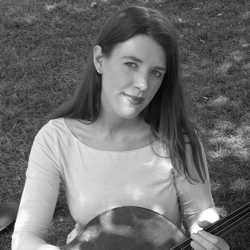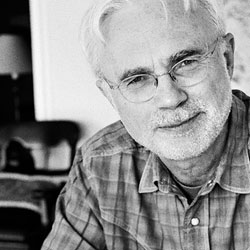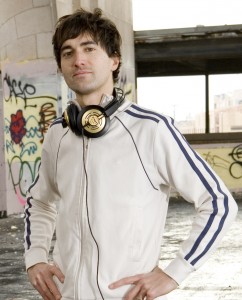In this post, Margo Drakos argues that musicians, like scientists and entrepreneurs, are the “inventors and innovators who will bring us into the future.” As a cellist turned tech entrepreneur, she certainly lives that truth and we’re looking forward to hearing her thoughts on “creativity” at our live event in San Francisco, this Saturday, March 17. Register today for our free Talking About Creativity event with Margo Drakos.
 “The souls of people, on their way to Earth, pass through a room full of lights; each takes a taper — often only a spark — to guide it in the dim country of this world. But some souls, by rare fortune, are detained longer — have time to grasp a handful of tapers, which they weave into a torch. These are the torch-bearers of humanity — its poets, seers, and saints, who lead and lift the race out of darkness, toward the light. They are the law-givers, the light-bringers, way-showers, and truth-tellers, and without them humanity would lose its way in the dark.” – Plato
“The souls of people, on their way to Earth, pass through a room full of lights; each takes a taper — often only a spark — to guide it in the dim country of this world. But some souls, by rare fortune, are detained longer — have time to grasp a handful of tapers, which they weave into a torch. These are the torch-bearers of humanity — its poets, seers, and saints, who lead and lift the race out of darkness, toward the light. They are the law-givers, the light-bringers, way-showers, and truth-tellers, and without them humanity would lose its way in the dark.” – Plato
Last spring and a world away this quote was read in mourning. Their numbers depleted by two, a group of journalists in Misrata, Libya gathered to eulogize a friend of mine, Chris Hondros, an world-renown photo-journalist, and his colleague, Tim Hetherington, director of award-winning Afghan war documentary Restrepo and conflict-photographer. Chris was incredibly passionate about classical music and it was the bridge that first connected us. As I transitioned from my career as a cellist into the technology space, I learned from Chris that our connection was more fundamental. Journalists, photographers, sculptors, musicians, entrepreneurs, inventors, and everyone who endeavors to interpret the humanity of which we are part, to preserve it, to share it, to move it forward, these, are the light-bringers, way-showers, and truth-tellers. We must embrace this role, not with hubris but with humility and realize that our accomplishments are not the reward for our dedication. Rather, our dedication is the price paid, and it is only a pittance, for the enormous privilege of “having been detained longer”- so that we might weave a torch.
Musicians, no less than historians, are stewards of our culture and our history – charged with preserving and interpreting the past. Music is a constant evolving culmination of the rich repository of human culture over the past hundreds of years. This is a deep brew – blending a vast number of societies and languages, and the composer’s intentions with one’s own voice, most often in tandem with others, to form a single, unique, interdependent expression.
Musicians, no less than journalists, are charged with bearing witness to the present and cataloguing and interpreting it for future generations. Our local and global communities need the arts, to process the world around, interpret it, share it with society, and make it personal, and thus relevant. Our tradition desires active participants and not passive observers in our society at large.
Musicians, no less than scientists and entrepreneurs, are inventors and innovators who will bring us into the future.
A career in the arts, be it as an orchestral musician, composer, teacher, booking agent, recording engineer, executive director, or any other capacity, is to dedicate one’s self to this set of ideals: Steward, Witness, Innovator. Just as doctors, lawyers, or engineers hue to and are bound by professional codes – so too are we as part of the artistic community. And in my mind to be a professional in the performing arts is defined less by the remuneration one receives for their craft than by the fealty to which they adhere to the noble underpinnings of our profession. Our world with its unprecedented rate of change will not be kind to those that do not recognize and balance the responsibilities of being a steward, witness and innovator.
Much of our education and presentation of classical music focuses on great masters of the past: Bach, Haydn, Beethoven, Mahler, Debussy, Strauss, Wagner – the list goes on. We do so with good reason, because the themes and the beauty of their works transcend time and cultures. The call to action that is before us all today – is to cultivate and disseminate the resonate themes of our time, that are relevant now and into posterity. And just as artists of the past used the media channels of their time, so must we use the mediums of our time – the web, smartphones and tablets, social media and video.
Last April, on a day’s notice via email, my childhood friends from Curtis and Marlboro who have gone on to found Brooklyn Rider and The Knights, played Mahler and Schubert at Chris Hondros’ funeral (some of his favorites). Over 2000 people attended the service in Brooklyn. Another 1000 watched for free on UStream.com joining in from Libya to Baghdad, Bagram, Beirut, Berlin and Boston. Technology enabled this music of the past to be shared with an audience that needed to grieve together, and pay tribute to a great witness of the present. Sitting in my home watching on my laptop, I felt connected to new friends watching a world away, and was deeply comforted by the haunting melodies from the great composers of the past, played magically by my old dear friends.
–Margo Drakos



 I grew up playing the clarinet. My father was my first teacher. He had played it during the 1930s and ’40s, when Benny Goodman and Artie Shaw were the pop culture stars of their day. By the time I got to college the electric guitar and heavily amplified rock music had replaced big band swing, and the clarinet was a ludicrously old-fashioned instrument. Paul McCartney used it in a song about retired people to set the tone for “When I’m Sixty-Four.” Grace Slick held an old metal clarinet in her lap for the cover of the Jefferson Airplane’s Surrealistic Pillow. By then it had become little more than a tchotchke. But there was no clarinet on any of her songs, and none I remember on any of the other great albums from that era.
I grew up playing the clarinet. My father was my first teacher. He had played it during the 1930s and ’40s, when Benny Goodman and Artie Shaw were the pop culture stars of their day. By the time I got to college the electric guitar and heavily amplified rock music had replaced big band swing, and the clarinet was a ludicrously old-fashioned instrument. Paul McCartney used it in a song about retired people to set the tone for “When I’m Sixty-Four.” Grace Slick held an old metal clarinet in her lap for the cover of the Jefferson Airplane’s Surrealistic Pillow. By then it had become little more than a tchotchke. But there was no clarinet on any of her songs, and none I remember on any of the other great albums from that era.  As
As